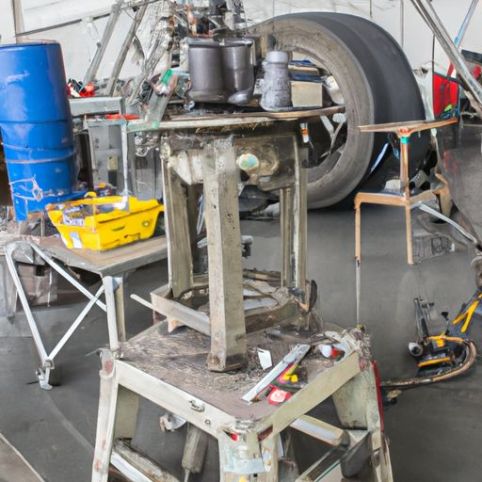Table of Contents
أهمية معلمات قضيب سحب الطائرة
يعد سحب الطائرات جانبًا حاسمًا في عمليات الطيران، لأنه يتضمن نقل الطائرات من موقع إلى آخر على الأرض. لتسهيل هذه العملية، يتم استخدام قضبان سحب الطائرات. قضبان السحب هذه عبارة عن أدوات مصممة خصيصًا تتصل بجهاز الهبوط الأمامي للطائرة، مما يسمح لموظفي الدعم الأرضي بقطر الطائرة بأمان وكفاءة.
تعد معلمات قضيب سحب الطائرة ضرورية يجب مراعاتها عند اختيار قضيب السحب المناسب طائرة معينة. تتضمن هذه المعلمات الحد الأقصى لوزن القطر، وطول شريط السحب، ونوع الطائرة المصممة لقطرها. يعد فهم هذه المعلمات أمرًا بالغ الأهمية لضمان القطر الآمن والفعال للطائرة.

استكشاف الجوانب الفنية الرئيسية لقضيب سحب الطائرات
هناك العديد من المعلمات التي يجب مراعاتها عند استخدام قضبان القطر بالطائرة. أحد أهم العوامل هو سعة وزن شريط السحب. تختلف أوزان الطائرات المختلفة، ومن الضروري استخدام قضيب سحب يمكنه التعامل بأمان مع وزن الطائرة التي يتم قطرها. يمكن أن يؤدي استخدام قضيب سحب ذو وزن منخفض جدًا إلى تلف الطائرة أو إصابة الطاقم الأرضي.
هناك معلمة مهمة أخرى يجب مراعاتها وهي طول قضيب السحب. يجب أن يكون طول قضيب القطر كافيًا لتوفير مسافة خالية بين الطائرة وأي عوائق على الأرض، مثل الطائرات أو المباني أو المعدات الأخرى. يمكن أن يؤدي قضيب السحب القصير جدًا إلى حدوث تصادمات أو تلف بالطائرة أو الهياكل المحيطة.
كما تعتبر مادة قضيب السحب من الاعتبارات المهمة أيضًا. عادةً ما تكون قضبان سحب الطائرات مصنوعة من الفولاذ أو الألومنيوم عالي القوة لتحمل القوى التي تمارس أثناء القطر. من الضروري استخدام قضيب قطر مصنوع من مادة متينة يمكنها تحمل الوزن والضغط الناتج عن قطر الطائرة.
بالإضافة إلى هذه المعلمات، هناك العديد من الجوانب الفنية لقضبان سحب الطائرة التي يجب أخذها في الاعتبار. واحدة من الجوانب التقنية الرئيسية هي آلية المرفق. عادةً ما تحتوي قضبان سحب الطائرات على خطاف أو دبوس يتم توصيله بجهاز الهبوط الأمامي للطائرة. من الضروري التأكد من أن آلية التثبيت آمنة ومحاذاتها بشكل صحيح لمنع انفصال قضيب السحب أثناء القطر.
هناك جانب تقني آخر يجب مراعاته وهو آلية التوجيه لقضيب السحب. تم تجهيز بعض قضبان سحب الطائرات بآلية توجيه تسمح للطاقم الأرضي بالتحكم في اتجاه الطائرة أثناء القطر. تعد آلية التوجيه هذه ضرورية للمناورة بالطائرة في المساحات الضيقة أو حول العوائق الموجودة على الأرض.
يعد توزيع وزن الطائرة أيضًا جانبًا فنيًا بالغ الأهمية يجب مراعاته عند استخدام قضبان سحب الطائرة. يجب أن يتم توزيع وزن الطائرة بالتساوي على قضيب القطر لمنع تلف مقدمة الهبوط أو المكونات الأخرى للطائرة. يجب على الطاقم الأرضي التأكد من توازن الطائرة بشكل صحيح على قضيب القطر قبل بدء القطر.
بشكل عام، يعد استخدام قضبان سحب الطائرة جانبًا حيويًا للعمليات الأرضية في صناعة الطيران. من خلال النظر في المعلمات والجوانب التقنية لقضبان سحب الطائرات، يمكن للطاقم الأرضي تحريك الطائرات على الأرض بأمان وكفاءة. يعد التدريب المناسب والالتزام ببروتوكولات السلامة أمرًا ضروريًا عند استخدام قضبان القطر للطائرة لضمان سلامة كل من الطائرة والطاقم الأرضي.
Aircraft tow bars are essential tools used in the aviation industry to move aircraft on the ground. These bars are designed to attach to the nose landing gear of an aircraft, allowing ground crew to tow the aircraft to and from the runway, hangar, or gate. The use of aircraft tow bars is crucial for efficient and safe ground operations, as they provide a means of moving aircraft without the need for engine power.
There are several parameters that must be considered when using aircraft tow bars. One of the most important factors is the weight capacity of the tow bar. Different aircraft have varying weights, and it is essential to use a tow bar that can safely handle the weight of the aircraft being towed. Using a tow bar with a weight capacity that is too low can result in damage to the aircraft or injury to ground crew.
Another important parameter to consider is the length of the tow bar. The length of the tow bar should be sufficient to provide clearance between the aircraft and any Obstacles on the ground, such as other aircraft, buildings, or equipment. A tow bar that is too short can result in collisions or damage to the aircraft or surrounding structures.
The material of the tow bar is also an important consideration. Aircraft tow bars are typically made of high-strength steel or Aluminum to withstand the forces exerted during towing. It is essential to use a tow bar made of a durable material that can withstand the weight and stress of towing an aircraft.
In addition to these parameters, there are several technical aspects of aircraft tow bars that must be considered. One of the main technical aspects is the attachment mechanism. Aircraft tow bars typically have a hook or pin that attaches to the nose landing gear of the aircraft. It is crucial to ensure that the attachment mechanism is secure and properly aligned to prevent the tow bar from becoming detached during towing.
Another technical aspect to consider is the steering mechanism of the tow bar. Some aircraft tow bars are equipped with a steering mechanism that allows ground crew to control the direction of the aircraft while towing. This steering mechanism is essential for maneuvering the aircraft in tight spaces or around obstacles on the ground.
The weight distribution of the aircraft is also a critical technical aspect to consider when using aircraft tow bars. The weight of the aircraft must be evenly distributed on the tow bar to prevent damage to the nose landing gear or other components of the aircraft. Ground crew must ensure that the aircraft is properly balanced on the tow bar before towing begins.
Overall, the use of aircraft tow bars is a vital aspect of ground operations in the aviation industry. By considering the parameters and technical aspects of aircraft tow bars, ground crew can safely and efficiently move aircraft on the ground. Proper training and adherence to Safety protocols are essential when using aircraft tow bars to ensure the safety of both the aircraft and ground crew.
